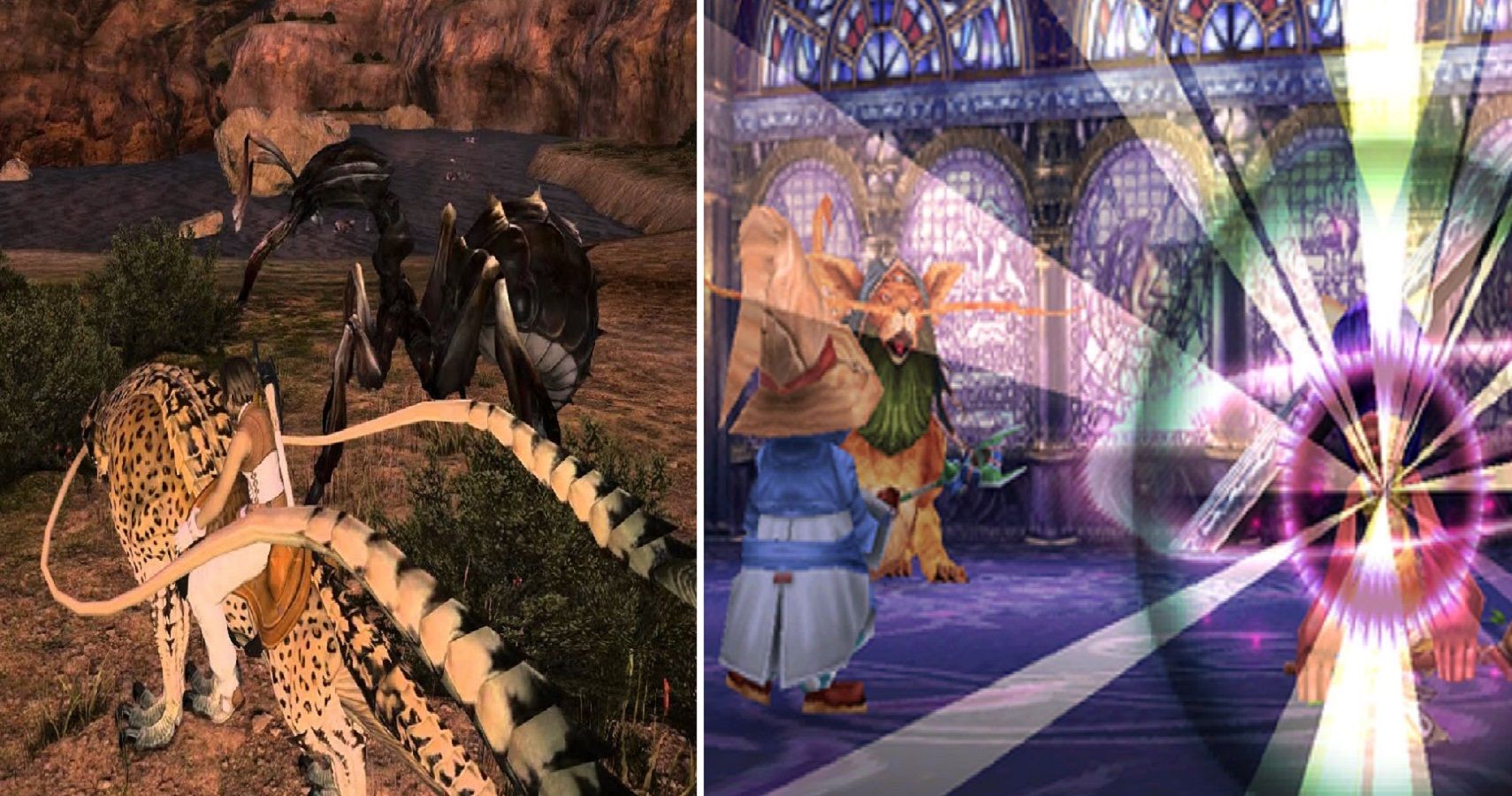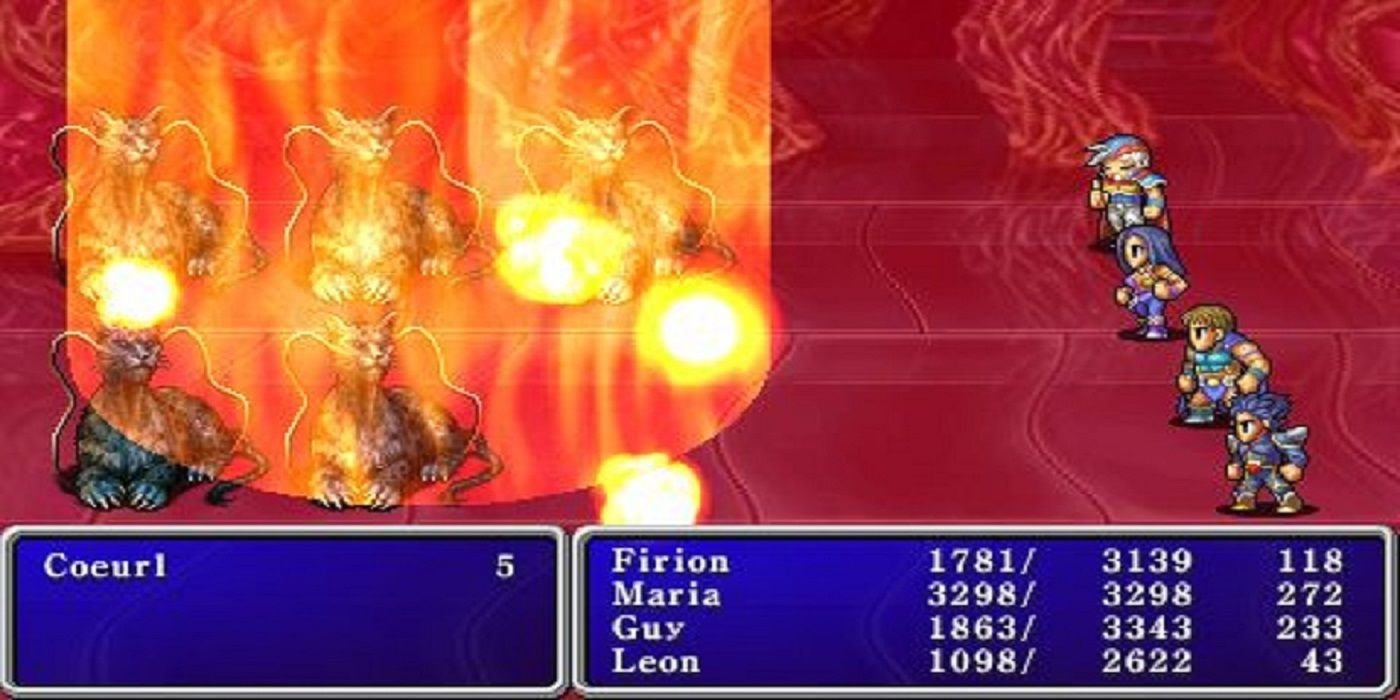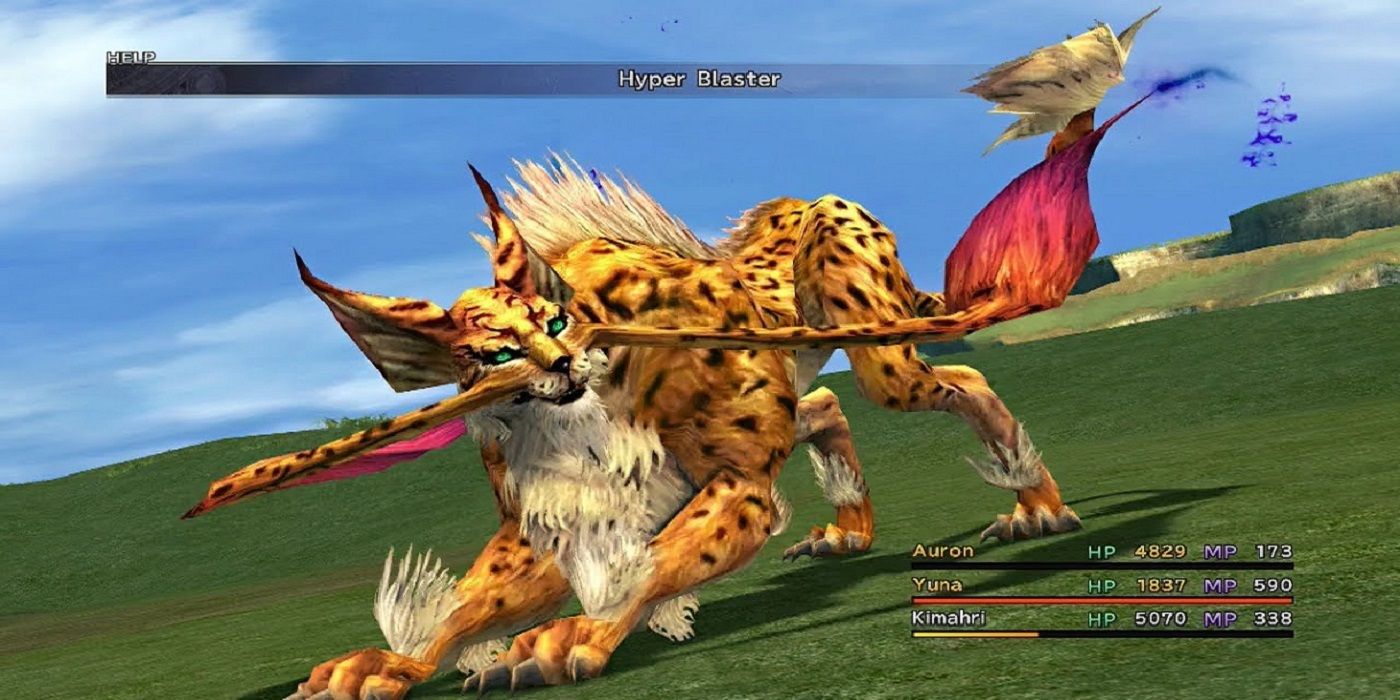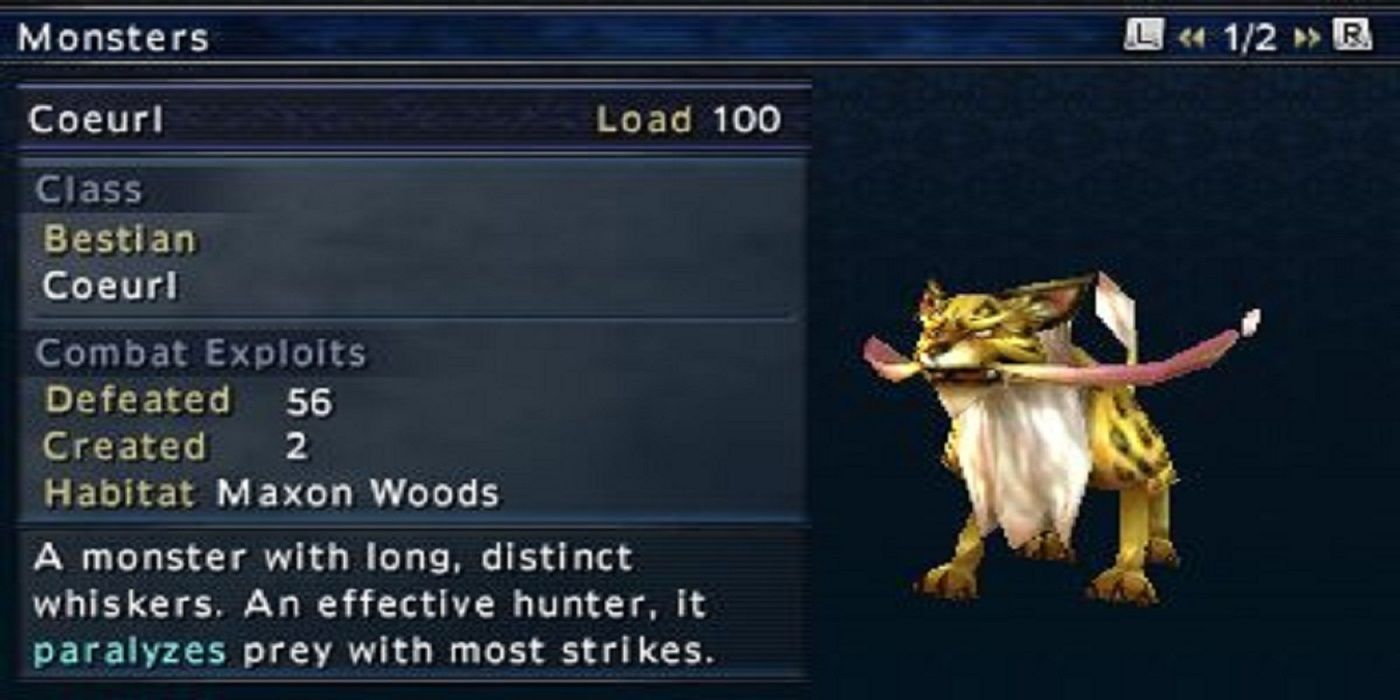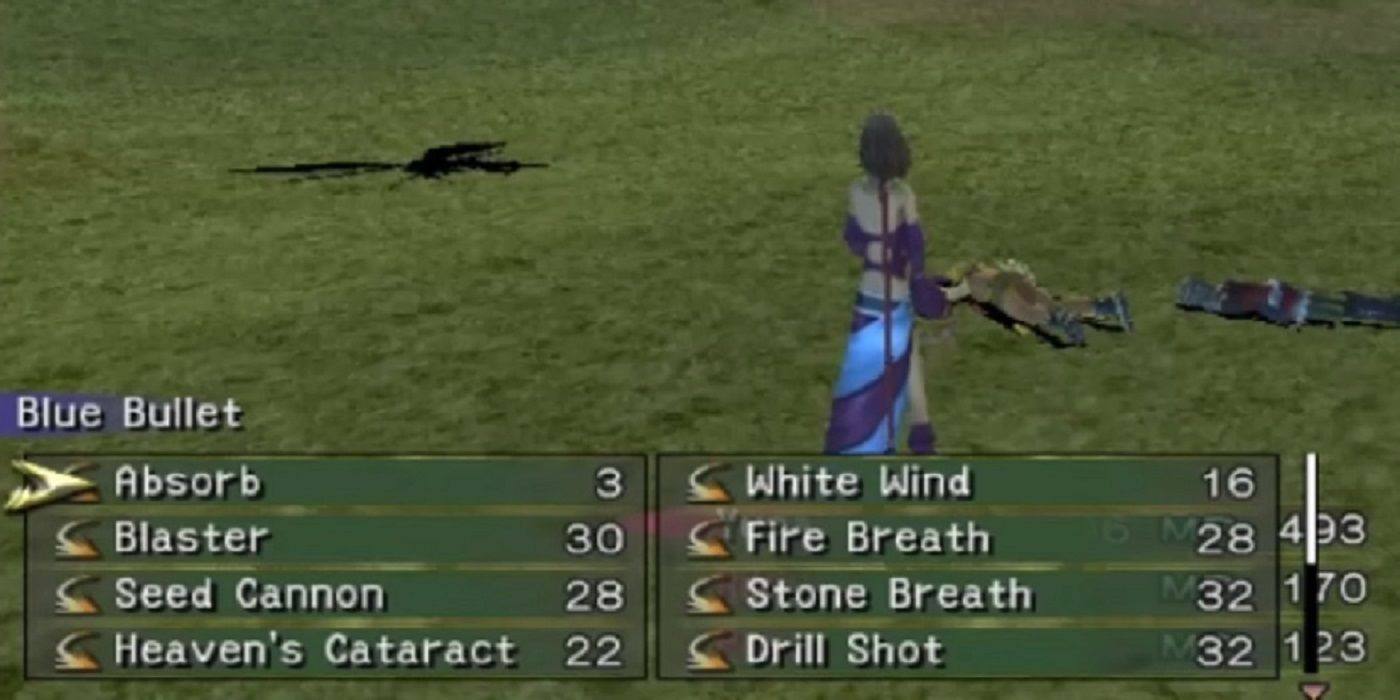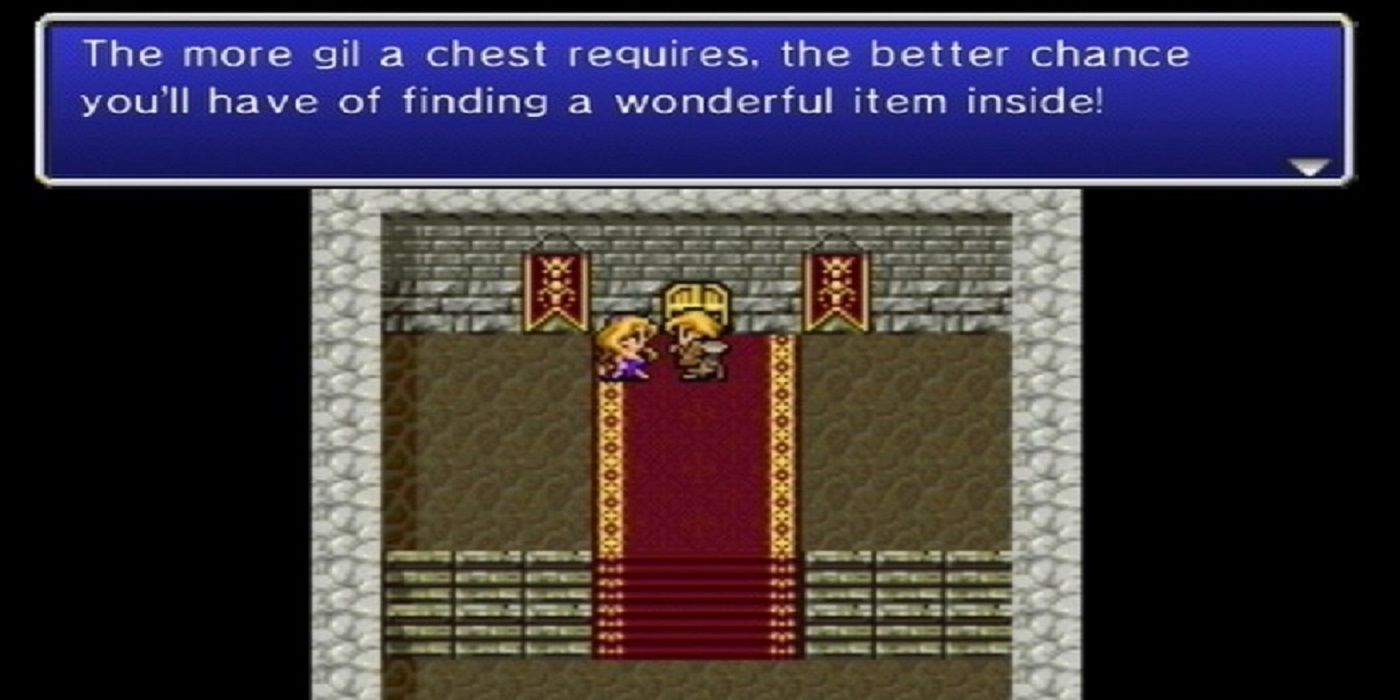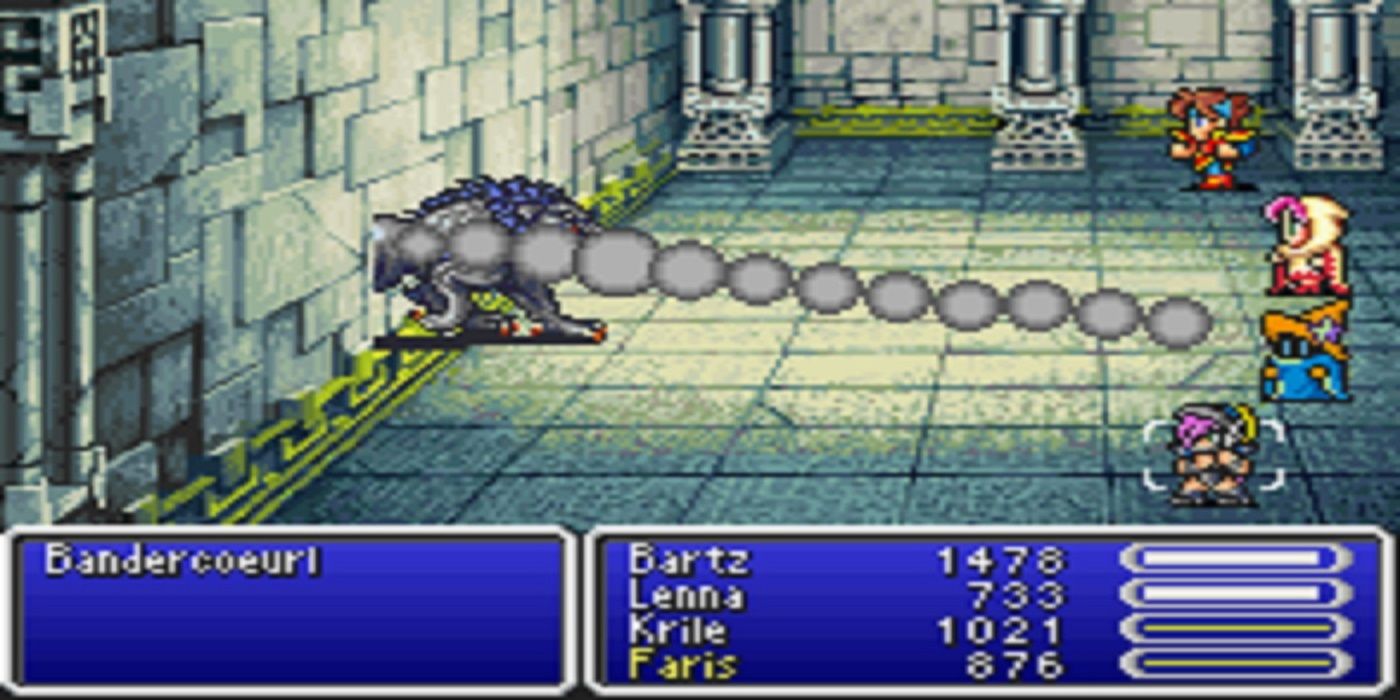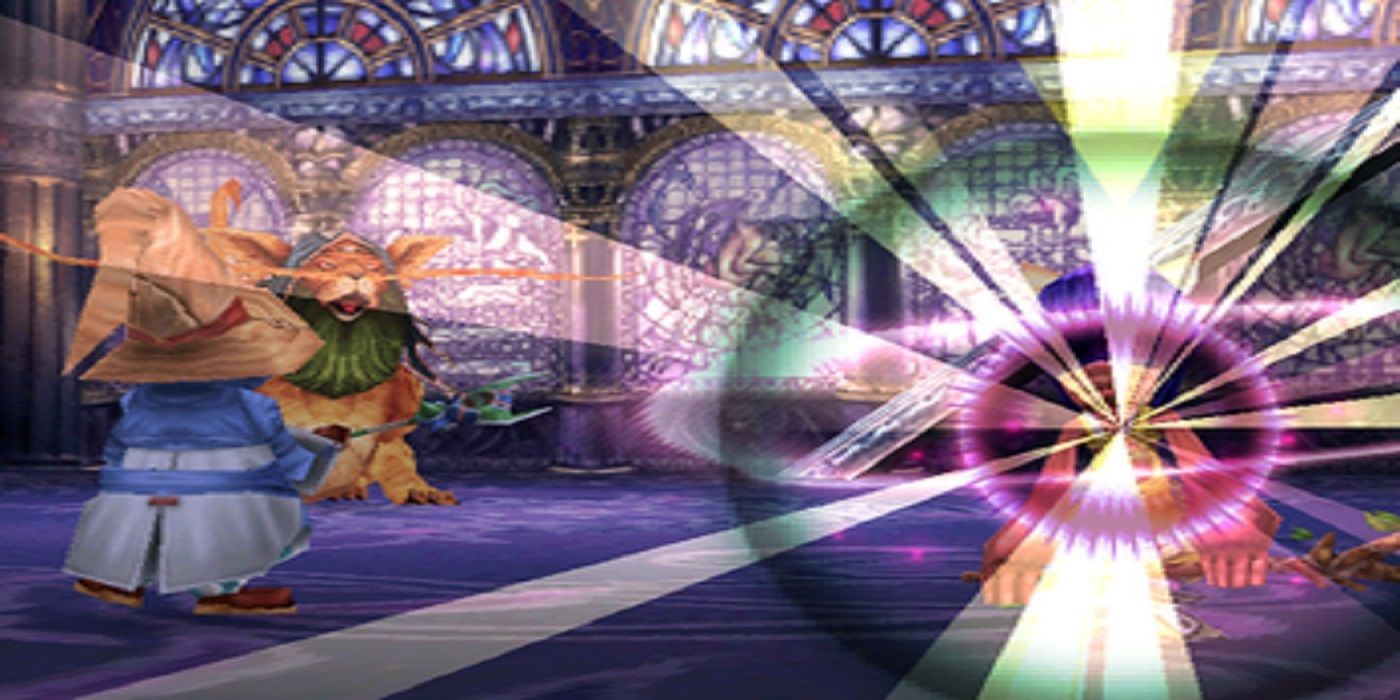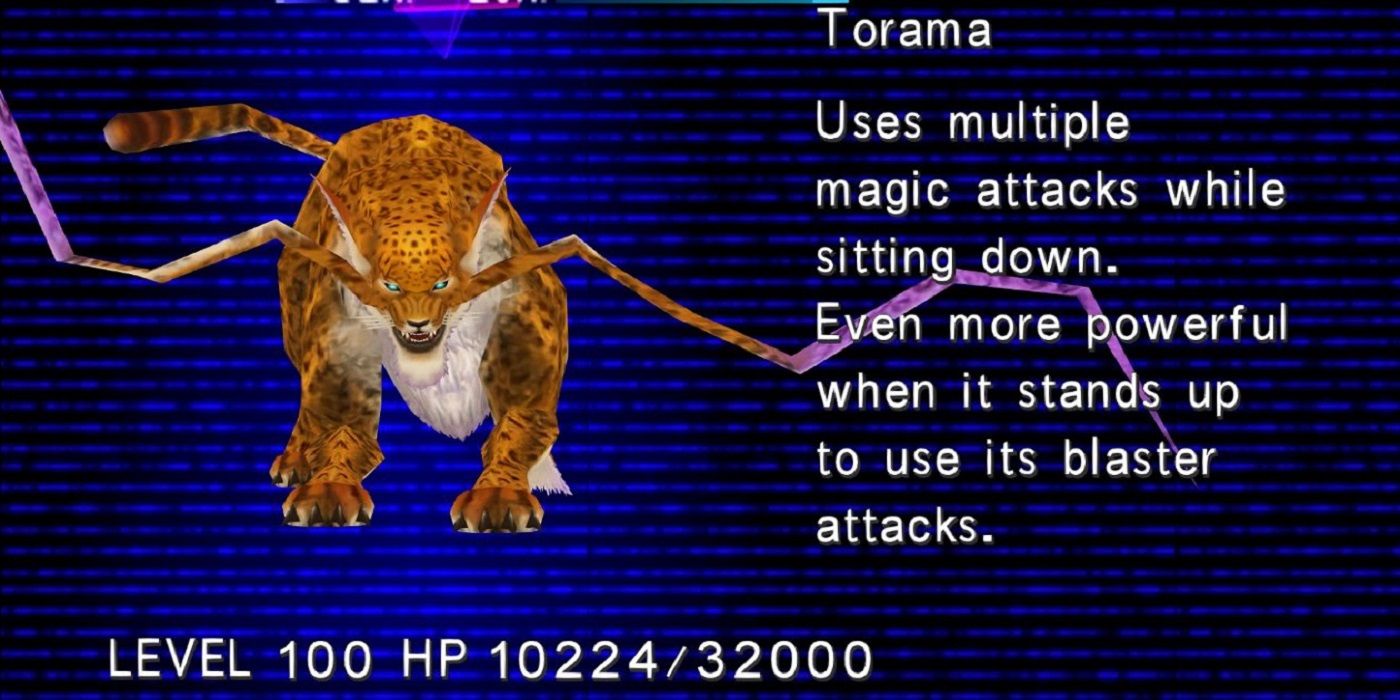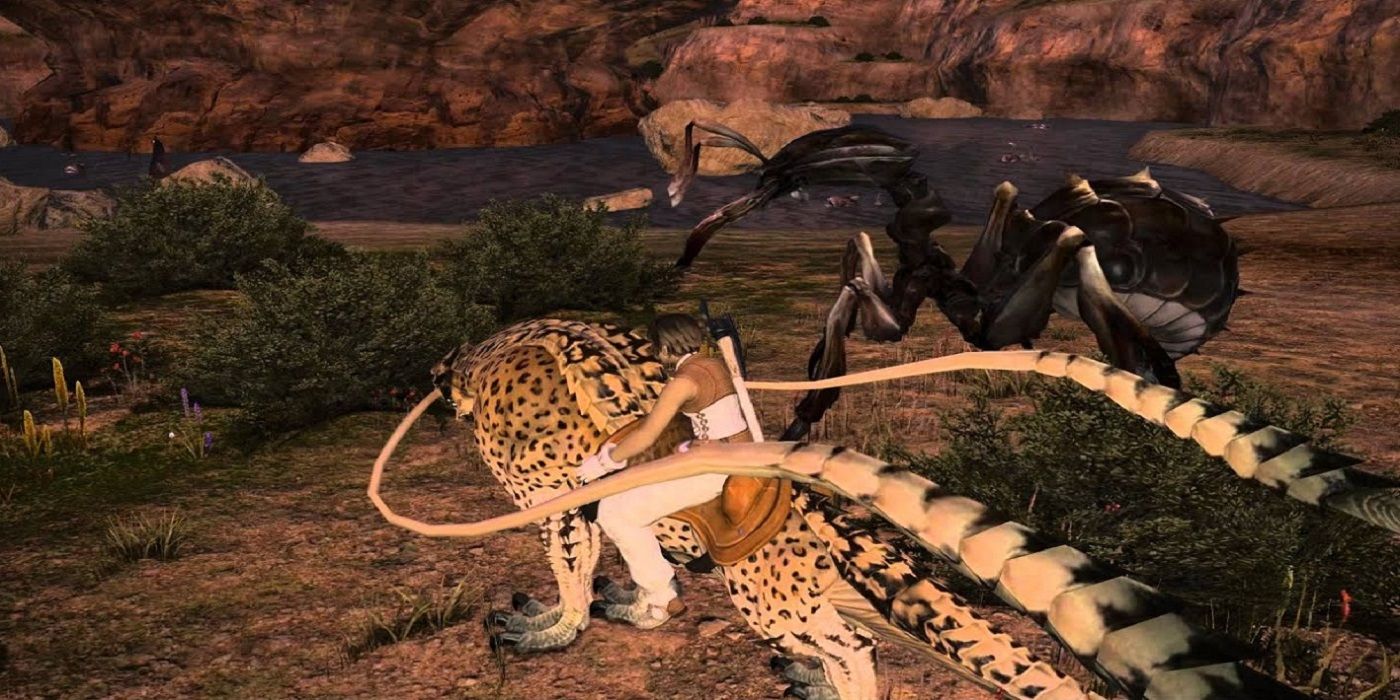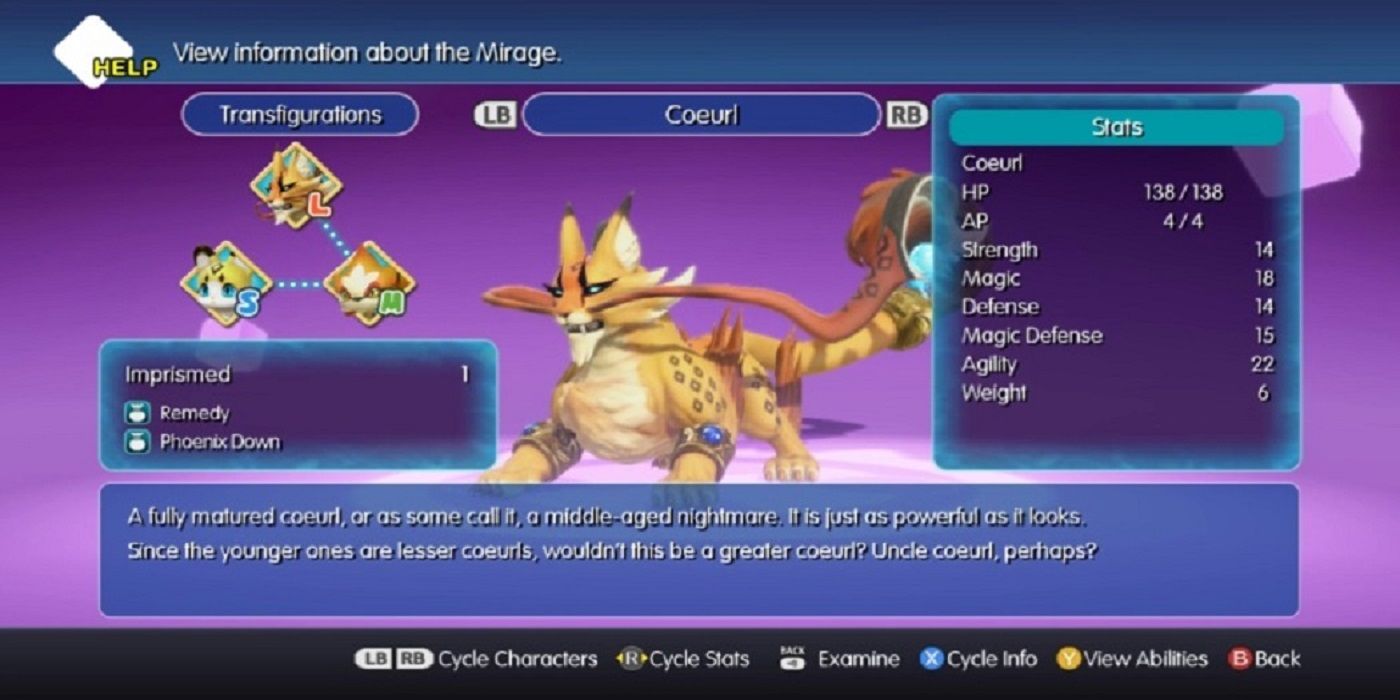The ever-beloved Final Fantasy franchise has never really been one for sequels in the traditional sense. Each of the mainline games, for the most part, are completely distinct from each other, in terms of settings, main characters and almost everything else besides.
This isn’t to say, though, that there aren’t defining characters and characteristics that tie all the games together. Recurring friends and foes, from Moogles and Chocobos to Adamantoises and Red Dragons, are commonplace. One sometimes under-appreciated example of a returning enemy is the Coeurl, an elegant, feline creature that can be a deadly foe. Here are some details about this noble creature you may not have known.
10 They First Appeared In Final Fantasy II
While the first game in the series established a lot of the elements fans would come to associate with the series (iconic job classes like Black Mage, for instance), it didn’t quite have everything down yet. As such, it’s understandable that some classic enemies didn’t feature.
The Coeurl, then, debuted in Final Fantasy II’s Palamecia (later popping up again in Pandaemonium). This title established their basic feline design, as well as the fact that they can be a heck of a pain to deal with.
9 They Have A Deadly Signature Move
The Coeurl tends to be quite a rare enemy, often restricted to particular areas or dungeons. As such, Final Fantasy dabblers may not be aware that this peculiar creature has a very special secret weapon: Blaster.
This attack typically boasts non-elemental properties and is capable of dealing very high damage. There are different types of Coeurl across the series, many of which are armed with a slightly different variants of the attack.
8 Blaster’s Effects Vary By Game
The key to any conflict, they say, is to know your enemy. Experienced Final Fantasy players probably know that Cactuars are going to be irritating, speedy, and evasive whichever game they’re encountered in, but the series’ Coeurls aren’t quite so predictable. Their signature attack differs more than you might think.
In Final Fantasy II, ‘Blaster X’ has its most common effect: dealing non-elemental damage and potentially inflicting the Paralysis status on the target. In Final Fantasy IV, V, and VI, a possible Instant Death effect is added. Final Fantasy VII’s variant causes party-wide magical damage, while Final Fantasy X-2’s Coeurl will reduce a target’s HP to 1 with the move. The attack isn’t exclusive to Coeurls in every game, but they’re the most notable users of it.
7 Party Members Can Rarely Learn It As Blue Magic
With an infamous technique like this, it’s always nice to have the opportunity to turn the tables and throw it right back at your enemies. The Final Fantasy franchise offers lots of opportunities to do so through Blue Magic, and Blaster is one enemy attack that can be learned by party members and utilized in battle.
Final Fantasy V’s Mind Blast is essentially the same attack (non-elemental damage with Paralyze, plus Sap), which can be acquired in the Merged World. In Final Fantasy X-2, however, Gun Mages can learn Blaster directly. Here, though, it’s a gravity-based attack that ‘deals’ 90% of a target’s HP as damage.
6 In "Final Fantasy IV: The After Years," They’re Found In Every Challenge Dungeon But One
Being the tricky foes they are, Coeurls have popped up in some difficult areas. Take Final Fantasy IV: The After Years, which features a post-game Challenge Dungeon for every character. The setup is a familiar one: delve into a harsh and difficult optional area in exchange for some excellent loot.
There are lots of powerful foes who just love inflicting infuriating status down here, and the pesky Coeurl features in all nine of them… bar one. Edward’s intriguing Challenge Dungeon, which tasks him with making Gil throughout in order to open the more valuable chests at the very end, is free of Coeurls.
5 They Come In A Lot Of Different Varieties
As the classic move Blaster has changed several times over the course of the series, so too has its most famous user, the Coeurl. From the Cait Sith to the Torama, from the Master Coeurl to the Coeurlregina, Bandercoeurl and Panther, there are many creatures throughout the series that are based on the original, similar to it or direct palette swaps of it.
Naturally, each has their own unique quirks, attacks (variations on Blaster, such as Coeurlregina’s Hyper Blaster, sometimes among them), weaknesses, resistances, and drops, but it’s clear to see that Square Enix holds this noble creature and its origins in very high regard.
4 Final Fantasy IX’s Version Of The Enemy Has A Very Unique ‘Attack’
In some entries, such as Final Fantasy VIII and IX, the Coeurl instead goes by the name Torama. In the latter, the Torama is found in the Desert Palace, during the puzzle dungeon the secondary party battles through.
While awaiting Zidane’s return from the devious Kuja’s errand to Oeilvert, the player will probably tangle with their share of these things, and they’ll notice something interesting: it won’t fire Blasters off willy-nilly. Instead, it uses the move Electrocute on itself first, imbibing its body with electricity. This super niche move (also recurring in the series with differing effects) is used by only two enemies: allowing Torama to use Blaster (note that this doesn’t appear to be a Lightning-based attack, oddly enough) and allowing Zaghnol to use Thundara.
3 It Has Two Distinct Battle Stances In Final Fantasy VIII
Speaking of Final Fantasy VIII’s Torama, this version of the creature also has a very distinct quirk. Typically, these enemies are seen casually lounging on the battlefield (they are felines, after all), and that’s the case here too when the battle begins.
It has a surprise up its sleeve when it takes enough damage in this underrated franchise entry, though: it becomes angered, rising from a prone position to a standing stance. On doing so, it stops firing out powerful magical spells and starts unleashing its trusty (you guessed it) Blaster attacks.
2 An Exclusive Coeurl Mount Is Available In The Collector's Edition Version Of Final Fantasy XIV
Final Fantasy XIV, as long-time fans will know, didn’t have the most stellar start on its original launch. So devastating was its 2010 failure, in fact, that Square Enix saw fit to reboot the entire thing, eventually leading to the release of Final Fantasy XIV: A Realm Reborn three years later.
As a MMORPG, the title has developed a flourishing user base over the years since, thanks to vast improvements in every aspect, from its dungeons to its gear. As far as the latter goes, special mounts and such are a given, but here’s something you may not know: Owners of the Final Fantasy XIV: A Realm Reborn Collector's Edition have access to an exclusive selection of mounts. They include one heck of a majestic Fat Chocobo Mount and, more importantly, a Coeurl Mount!
1 It’s Transfigured From A Moomba In World Of Final Fantasy Maxima
The Coeurl also appears in the adorable cutesy spin-off World of Final Fantasy Maxima. This title features the mysterious Moombas from Final Fantasy VIII as enemies, and these furry orange critters have an interesting secret.
In this title, Mirages can be Transfigured into other, stronger ones, in a process quite similar to Pokémon evolution. The Moomba is a Lesser Coeurl Transfiguration (at level 15) and a Coeurl Transfiguration (level 35). These two species don’t actually have any relation, but that’s just the curious way that Transfiguration works in World of Final Fantasy.

